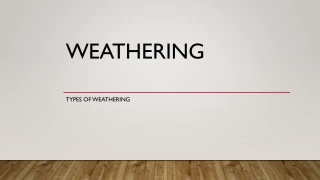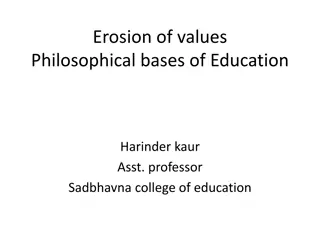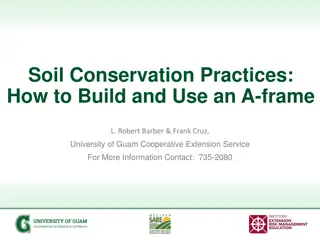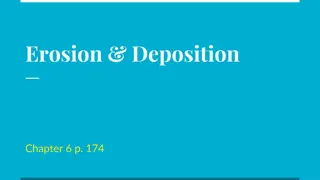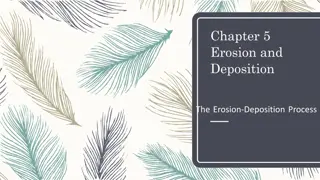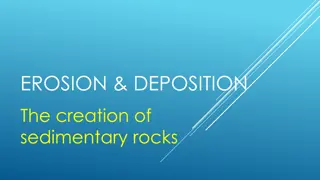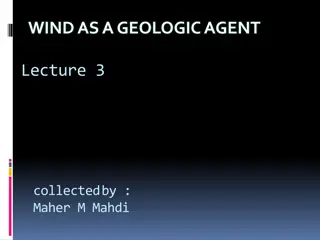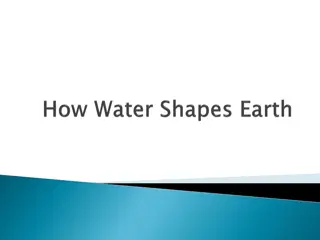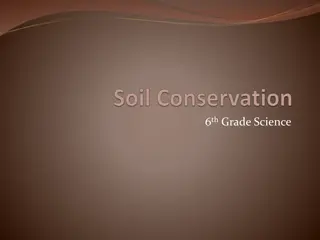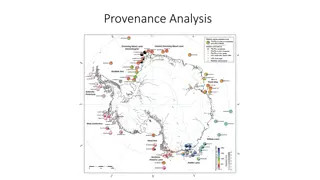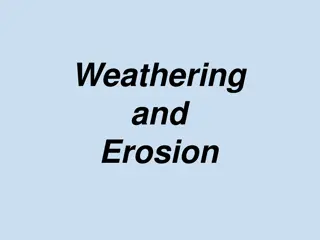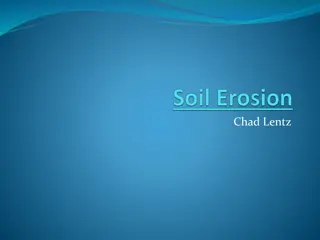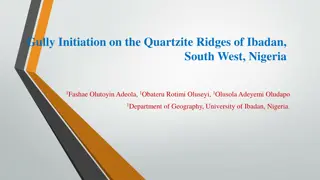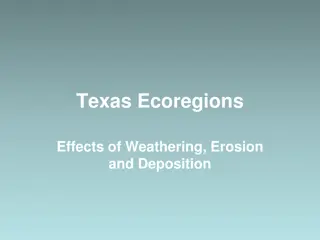Earth's Surface Changes: Weathering and Erosion
Weathering is the breakdown of rock into smaller pieces due to mechanical and chemical processes. Mechanical Weathering breaks rocks physically, while Chemical Weathering alters a rock's chemical makeup. Observing Weathering effects on structures and landforms over time. Erosion involves the movement of weathered materials like gravel, soil, and sand driven by water, wind, and glaciers.
Download Presentation

Please find below an Image/Link to download the presentation.
The content on the website is provided AS IS for your information and personal use only. It may not be sold, licensed, or shared on other websites without obtaining consent from the author.If you encounter any issues during the download, it is possible that the publisher has removed the file from their server.
You are allowed to download the files provided on this website for personal or commercial use, subject to the condition that they are used lawfully. All files are the property of their respective owners.
The content on the website is provided AS IS for your information and personal use only. It may not be sold, licensed, or shared on other websites without obtaining consent from the author.
E N D
Presentation Transcript
I. Changes on the Earths Surface A. Weathering i. Is the breakdown of rock at or near the earth s surface into smaller and smaller pieces. ii. Two types of weathering. a. Mechanical b. Chemical
a. Mechanical Weathering 1. Occurs when rock is actually broken or weakened physically. 2. Breaks large masses of rock into smaller pieces, producing boulders, stones, pebbles, sand, silt and dust. 3. Most common type of Mechanical Weathering is known as Frost Wedging.
b. Chemical Weathering 1. Alters a rock s chemical makeup by changing the minerals that form the rock or combining them with new chemical elements. This means chemical weathering can change one type of rock into an entirely different type causing the loss of valuable minerals (leaching). Most important factors water and carbon dioxide. *** Acid Rain is another type of chemical weathering. Some known causes of acid rain are acid- producing agents from the ocean, volcanic activity and industrial pollution.
c. Observing Weathering 1. Besides the effects on old stone structures such as tombstones, it also softens the sharp features on carved stone statues, and breaks down the mortar that holds together stone or brick walls. 2. Weathering also changes natural landforms, jagged mountains can turn to rounded hills over millions of years.
B. Erosion 1. The movement of weathered materials such as gravel, soil and sand. 2. The three most common causes of erosion are a. water, b. wind and c. glaciers.
a. Water i. Moving water rain, rivers, streams and oceans (mixed with sediments AKA small particles of soil, sand and gravel) is the greatest cause of erosion.
b. Wind i. ii. Drought caused soil to dry, wind blew and stripped the land of its minerals and nutrients. iii. Sandstorms are major causes of erosion. Caused the Dust Bowl during the 1930s.
c. Glaciers i. ii. While rivers cut sharp-sided, V-shaped valleys, glaciers carve out valleys that are rounded and U-shaped. Huge, slow-moving sheets of ice.


